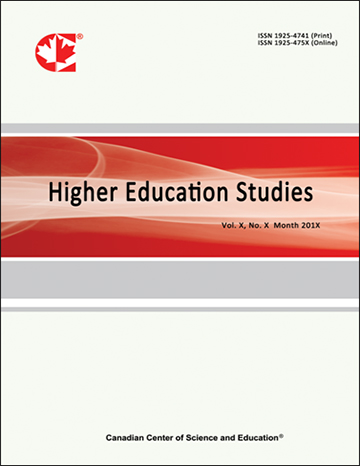Analysis of Undergraduates' Compulsory Courses in China's Comprehensive Universities-A Case Study
- Sai Ma
- Yanrong Li
- Peipei Zhang
Abstract
Drawing on case study evidence, this article explores the development of compulsory courses in a China’s high-level comprehensive university, which has achieved good results in the procedure of Quality Assessment of Undergraduate Education (QAUE) and China Discipline Ranking (CDR) issued by Ministry of Education (MOE). The general undergraduate majors of this university are classified into 5 categories, namely, journalism and communication, economics and management, science and engineering, foreign language and literature, humanities and social science. The research scope is from grade 2007 to 2017, 2007 fall to 2018 spring semester, respectively. According to the requirements of MOE, the compulsory courses are divided into two parts: public and professional. The public part mainly refers to the courses of physical education, ideological and political and elementary computer science, while the professional part is mostly relevant to the courses associate with the major. The laws of two parts are studied by utilizing the features of course name, course ID, credits and appropriate semester. The conditions of characteristic development, the workload of teachers and students and the interdisciplinary platform, which are universal in Chinese Higher Education Institutions (HEIs), are mentioned.
 PDF
PDF
